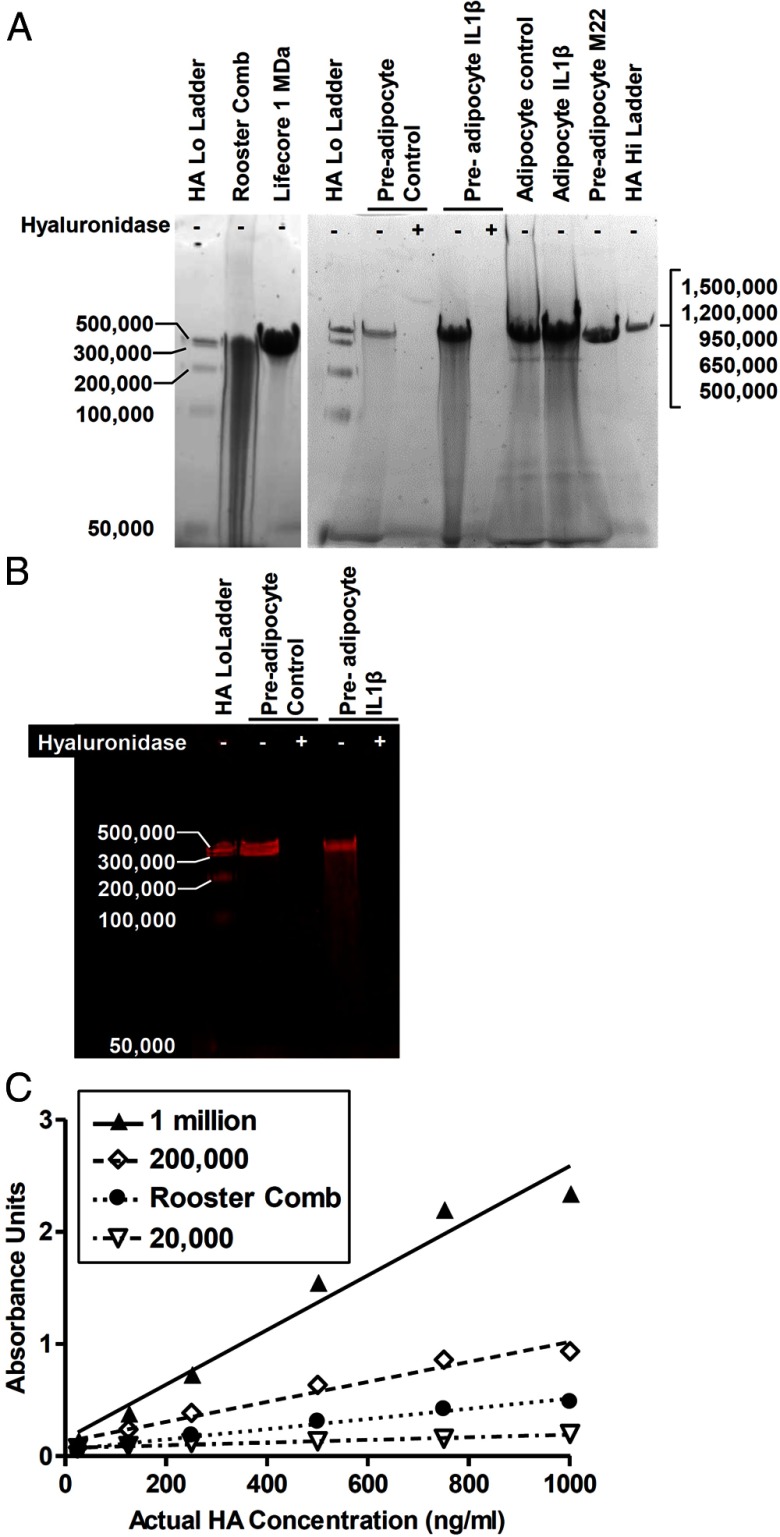Figure 1.
PAGE of HAs and HA-HABP interaction. A, Representative PAGE. HA samples were run on a 3%–12% NativePAGE gel and visualized with Stains-All. The Select-HA LoLadder in lanes 1 and 4 contains equal masses of 5 HA polymers ranging from 50 000 to 500 000 in size, which were separated as 4–5 distinct bands. Rooster comb HA (lane 2) was a polydisperse mixture with a significant LMW component. A HA standard of 1 million in size (Lifecore 1 MDa) is shown in lane 3. HA secreted from orbital fibroblasts migrated as a single band with mobility similar to 1 million MW HA; size distribution showed little change with treatment of IL-1β, M22, or differentiation. Hyaluronidase controls indicate bands were primarily HA; hyaluronidase treatment (+) of the lysates before electrophoresis degraded the band compared with untreated lysates (−). The Select-HA HiLadder in lane 12, comprised of equal masses of HA polymers sized 500 000 to 1.5 million, migrated as a single band. B, HA from undifferentiated GOFs (preadipocytes) was depolymerized and transferred to a nylon membrane. Degradation by hyaluronidase and reactivity with biotin-HABP confirmed that PAGE bands were virtually entirely HA. HABP signal was brightest for HMW bands even though equal masses of HAs of different sizes were applied. C, Purified 20 000, 200 000, and 1 million MW HA polymers and rooster comb HA were processed in a commercial HA ELISA. The HA-HABP interaction was determined by the colorimetric signal and demonstrates that, for a given mass of HA, HABP signal is greater for larger polymers. A mixture of lower size HAs, such as rooster comb, results in a signal much lower than the HMW HA seen in fibroblast samples.

